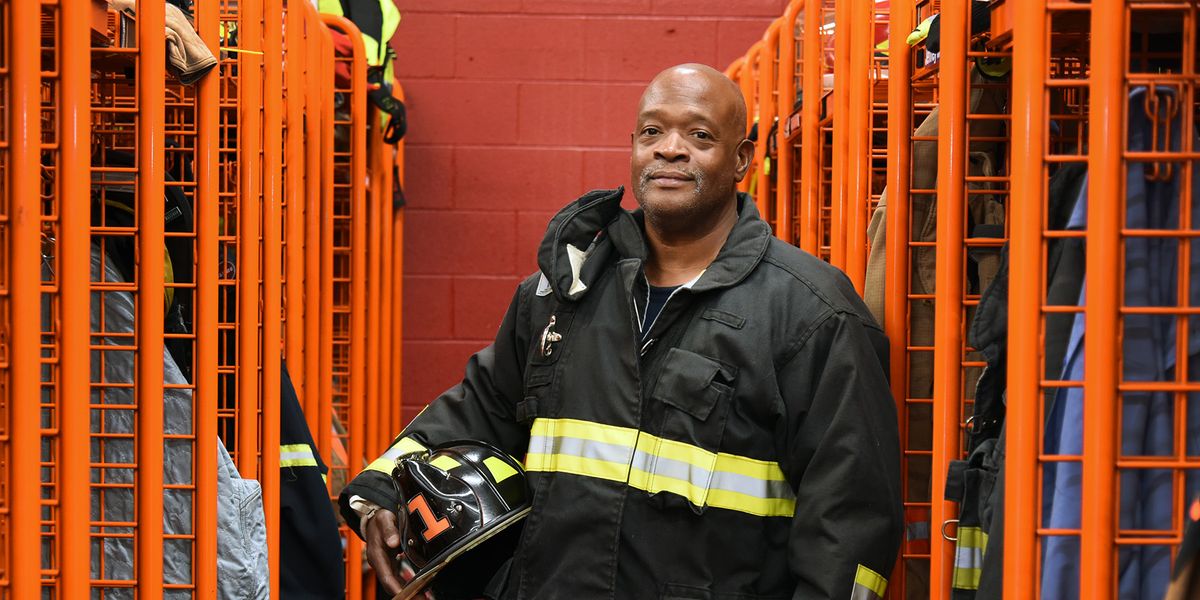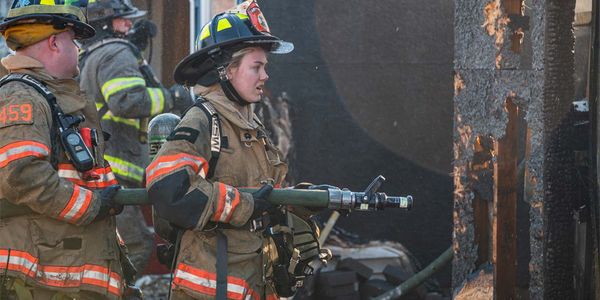
The U.S. Fire Administration Celebrates Black History Month
Inspired by the Past, Driven in the Present and Energized for the Future
Posted: Feb. 1, 2024
- Find similar articles:
- Events
- Leadership
Although Black history can be celebrated throughout the year, Black History Month offers an opportunity to reflect on and share the successes and accomplishments of African Americans in the fire service. And by looking at the past and present, the future comes into view — a future of opportunity achieved through diversity, equity and inclusion.
The past
In many ways, the American firefighting community mirrored other opportunities and was not initially open and welcoming to minorities. Thus, the history of Blacks and the American fire service is one of breaking through the barriers of prejudice.
Early records of Black firefighters are fragmented and incomplete. The oldest documentation of government-sanctioned African American firefighters goes back to 1817 in New Orleans, when free men of color and slaves were recruited following a devastating fire.
Highlights of Black history in the fire service
1818
Molly Williams, the first African American woman (and first woman) firefighter, works alongside men in a volunteer fire company in New York City.
1871
In Cambridge, Massachusetts, Patrick H. Raymond is appointed as the first African American fire chief in the United States.
1872
The first paid Black fire company in the Chicago Fire Department is organized. This company is credited with the idea of using a firehouse sliding pole for quick descent from an upper level to the ground level.
1902
African American George Bright is promoted to lieutenant and becomes the first Black officer in the Los Angeles Fire Department.
1907
John Cheatham becomes Minneapolis' first African American fire captain.
1919
11 Black firefighters become part of Washington, D.C.'s first all-African American fire company.
1921
7 African American men become paid members of the St. Louis Fire Department. A day after they are hired, the first African American woman, Pearl Bishop, is hired by the department.
1966
Robert O. Lowery becomes New York's 21st fire commissioner and the first African American fire commissioner of a major U.S. city. He serves until 1973.
1970
The International Association of Black Professional Fire Fighters is organized. It now represents more than 8,000 fire service personnel throughout the United States, Canada and the Caribbean, organized in 180 chapters.
1976
Toni McIntosh of Pittsburgh, Pennsylvania, becomes the first African American woman to become a career firefighter.
1994
Carrye B. Brown becomes the first African American and woman appointed as U.S. fire administrator.
1997
The African American Firefighter Museum opens in Los Angeles.
2002
Rosemary Cloud becomes fire chief of the East Point (Georgia) Fire Department, the first African American woman appointed as fire chief for a career fire department.
2009
Baltimore firefighter George Collins and Ret. Lt. Michael Jenson found the African American Fire Fighters Historical Society.
2021
2021 Annette Nance-Holt is appointed Chicago Fire Department commissioner, becoming the first African American woman to lead the department.
We honor the contributions of African American firefighters by building on the sacrifices and achievements of generations past. In the words of Liz R. Summers, an African American woman who joined the Atlanta Fire Department in 1977 and was eventually promoted to Battalion Chief:
I left a legacy. I paved the way for the other women, other minorities, not just women.
The present
There are an estimated 1,041,200 firefighters (364,300 career, 676,900 volunteer) in the United States; 8.4% of career firefighters are African American PDF.
When seen through the lens of the past, this represents significant forward motion. However, as we help fire departments achieve their full potential, we at the U.S. Fire Administration (USFA) believe that there is more work to be done to build a diverse, equitable and inclusive workforce.
Diversity
Include in your fire department people who represent the many identities, races, ethnicities, backgrounds, abilities, cultures and beliefs of your community.
Equity
Ensure the consistent and systematic fair, just and impartial treatment of employees and community members, including individuals who belong to underserved communities that have been denied such treatment.
Inclusion
Recognize, appreciate and use the talents and skills of employees and community members of all backgrounds.
[We] will provide a higher level of service to the communities we serve when the people of that department respect the culture, language and beliefs of the people within that community.
The future
We are committed to supporting and strengthening the fire and emergency medical services and stakeholders as they build on the past and embrace diversity, equity and inclusion to reach their full potential and realize a bright future.
The USFA is hopeful for a future in which a fire department's workforce reflects the community it serves and where all fire service leaders understand that a diverse, equitable and inclusive environment provides a fire department with the ability to:
- Provide a higher level of service with personnel that better understand community needs.
- Generate solutions to long-standing problems by exploring different perspectives and drawing on experience from various backgrounds.
- Leverage more experiences and different ideas to be more flexible, proactive and better able to adjust to new challenges.
Professional development opportunities:
Learn more: What it means to really commit to a diverse and inclusive fire department
Related podcasts
Fire service diversity, equity and inclusion
On this episode, we talk with Dr. Jennifer Taylor about diversity, equity and inclusion within the fire service, and more specifically, how to start the conversations within our organizations.

